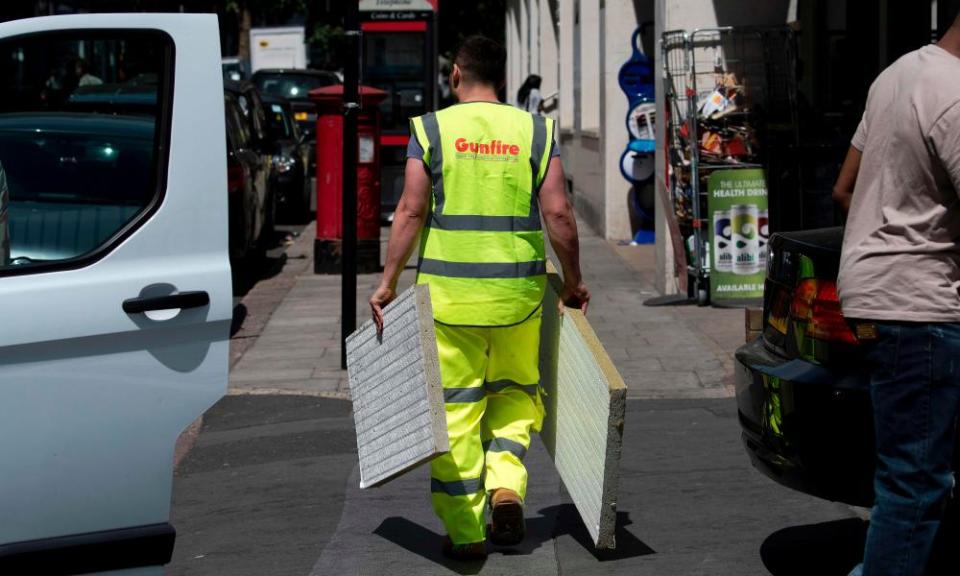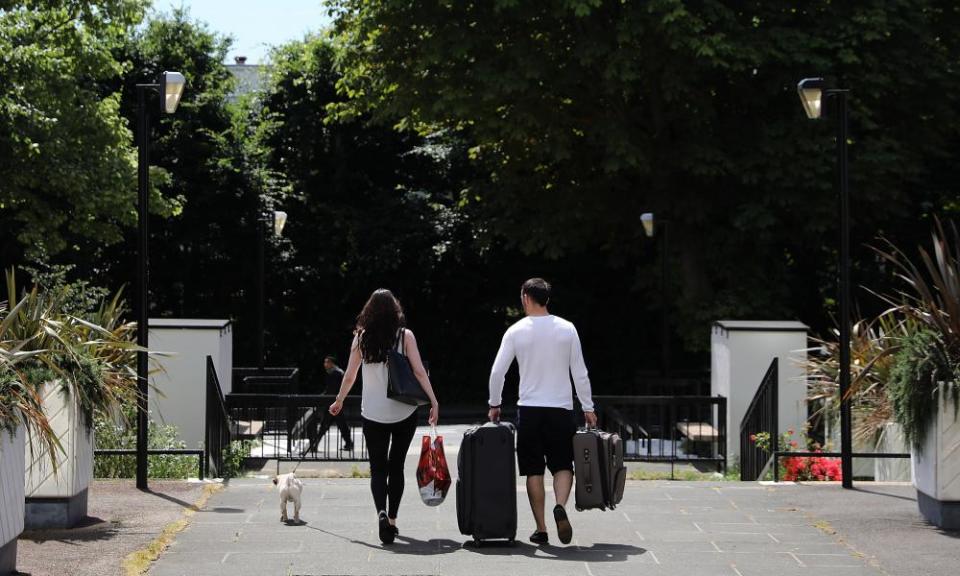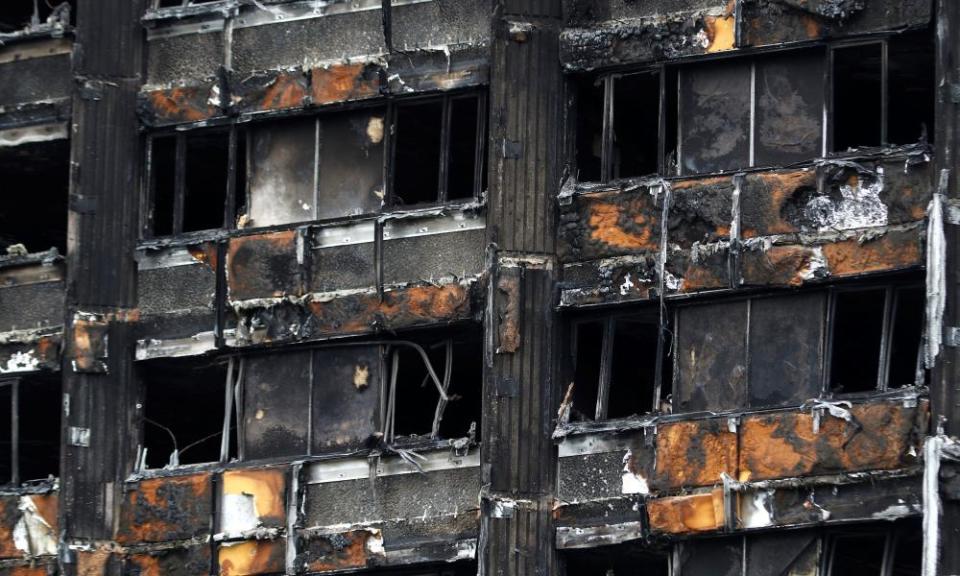Post-Grenfell fire safety checks stepped up as cladding pulled from sale worldwide

The nationwide search for tower blocks at risk of a Grenfell-type blaze gathered pace on Monday as the government said 75 had now been identified and a material linked to the spread of the fire was pulled from sale worldwide.
The communities secretary, Sajid Javid, called on landlords of more than 500 other suspect blocks to urgently provide samples for testing after the company that makes a component of the cladding used on Grenfell discontinued its supply.
The number of tower blocks to have failed fire safety tests following the disaster has risen steadily to 75, but the government has been frustrated at the speed with which landlords have cooperated.
Javid announced that every building checked so far had failed a combustibility test and made clear further that evacuations were possible. He said he expected councils to offer alternative accommodation while remedial work was carried out to make buildings safe.
“I am concerned about the speed with which samples are being submitted,” he said in a statement to parliament. “I would urge all landlords to submit their samples immediately … At this time the safety of people living in these buildings is our paramount concern. Landlords must keep residential buildings safe.”

Earlier on Monday, the manufacturer of the Reynobond polyethylene-filled panels used on Grenfell Tower pulled the product from sale globally for use on high-rise buildings. It is believed that the material may have contributed to the rapid spread of the fire through the 24-storey building, which claimed at least 79 lives. Explaining the decision to withdraw the material from sale, the US company Arconic cited concerns about the “inconsistency of building codes across the world”.
Use of the product is in effect prohibited on towers in countries including Germany and the US, but not in the UK, although since the Grenfell fire, the government has said it “should not be used for cladding on a building taller than 18m”.
Investigations are being extended into the cladding on schools and hospitals nationwide and 15 government buildings have also been identified as being in need of inspection. .
Javid acknowledged public “anger that a tragedy of this scale could be allowed to happen in 21st-century Britain and fear that it could happen again” as councils in Manchester, Liverpool, Portsmouth, Plymouth, Sunderland and London confirmed that panels were being removed from a number of residential towers. Evacuations have continued at blocks in Camden, north London.
Speaking about building regulations, Javid said there had been a “catastrophic failure” and that an independent panel would be established to recommend immediate steps to reform fire safety.
There were questions, however, about the government’s focus on testing samples.

The shadow housing minister, John Healey, said: “Cladding is not the whole story. We know this from the coroners’ reports into the Lakanal House and Shirley Towers fires.”
After residents were evacuated from four towers in Camden, it emerged that fire investigators were worried about internal fire risks, including hundreds of missing fire doors.
Stephen Mackenzie, a fire safety expert, also said the tests, which involve checking the combustibility of a piece of panel as small as 25cm square, were “overly simplistic” and mean “we could be pulling off cladding systems that are potentially OK”.
Earlier in the day inquests opened at Westminster coroner’s court into four victims of the fire, including five-year-old Isaac Paulos, whodied of “inhalation of fire fumes”. He lived with his family on the 18th floor, but his body was found on the 13th. The Westminster coroner, Dr Fiona Wilcox, added that some 18 victims had so far been formally identified.
Downing Street indicated that the public inquiry into the fire would be expanded to examine why the combustible cladding was used on so many tower blocks across Britain.

A spokesman said the public inquiry would seek to address a national failure of building regulations and inspections and the widespread use of the suspect cladding. “The job for the public inquiry will be to find out how and why this happened,” he said.
More than 150 households from Grenfell Tower and Grenfell Walk are currently living in hotel rooms, and 59 offers of temporary homes have been made. Some families, when shown potential homes with views of the Grenfell Tower’s burned-out shell, have turned them down.
Javid said 111 affected households had received emergency payments of £5,500 as part of a £5m package, which the government boosted on Monday with a £1m grant to the British Red Cross, which is helping with relief efforts.
The Grenfell response team said on Monday it had spent almost £1.5m helping affected families, including £789,230 in discretionary payments to cover hotel bills. The team said it had made 140 placements in hotels and that 364 households remained in emergency accommodation. Out of total payments of £1,450,730, it said it had made 243 cash payments of £500 to families, while the Department for Work and Pensions put £5,000 directly into 108 households’ bank accounts.
Speaking at Glastonbury on Sunday, the shadow chancellor, John McDonnell, said the victims of the Grenfell Tower fire “were murdered by political decisions that were taken over recent decades”.

 Yahoo News
Yahoo News 
